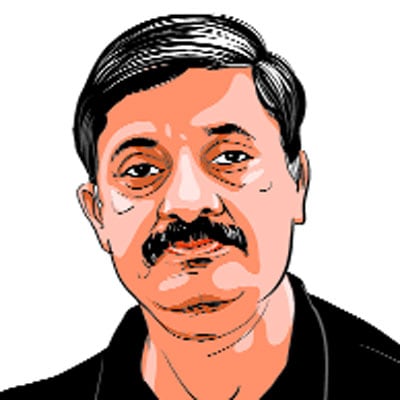Opinion Unity and diversity: Our obsession with diversity misses the point
Meeta Rajivlochan and M. Rajivlochan write: All nations have diversity. It is only by overcoming narrow identities that they flourish
 India has thrived so far despite numerous dire predictions because over a billion people value the benefits that flow from being part of the larger collectivity much more than their membership of any narrow grouping based on caste, religion, language or region.
India has thrived so far despite numerous dire predictions because over a billion people value the benefits that flow from being part of the larger collectivity much more than their membership of any narrow grouping based on caste, religion, language or region. The obsession with diversity haunts India. “India is marked by unity in diversity,” Nehru observed. The fact, of course, is that nations all over the world are diverse. Pakistan, Bangladesh, Nepal and Afghanistan are diverse. So are China, Russia, Germany, Poland, Great Britain and France. Perhaps the only non-diverse nations that exist in the world are some of the pocket-sized nations in Northern Europe, which have a population less than Delhi. Diversity or its absence is never a problem. The absence of a national will is, as is the belief that some people within the nation do not belong.
Diversity never vanishes. People merely stop obsessing about it. In 19th century Europe, people realised that it made sense to live together as a nation rather than insist on a lesser identity, whether of religion or region or caste. The modern state system has emerged based on impersonal rules that are neutral to such identities. In Britain, such a realisation was already present in the early 19th century. In France, Napoleon forced unity even though as recently as 1999, an official report from France identified the continued existence of some 75 distinct languages in that country. Germans and Italians consciously sought out cultural unity among their diverse political groups. Even the USSR, one of the most diverse countries in the world, managed to find unifying threads that would hold its people together.
Come to think of it, China is even more culturally, linguistically and religiously diverse than India. “Han” – the term used to denote the people who are the supposed majority in China — was before the 20th century, merely used to denote a civilised person as opposed to the barbarians; much like the word “Arya” is said to have been used in India before unthinking Indians were seduced by the idea that it stands for race. “Han” did not refer to an ethnic group. Modern Chinese scholars Zhang Lei and Kong Qingrong in their 1999 book Coherence of the Chinese Nation write that, “according to Confucianism, the distinction between ‘hua (xia)’ (civilised Han) and ‘yi’ (minority barbarians) was a cultural boundary rather than a racial and national boundary”. They explain that “the barbarian-civilised distinction did not indicate racial or national exclusiveness. Instead, it was a distinction involving differentiated levels of cultural achievement”.
The Chinese, unbeknown to Indians, profess five major and over 20 minor religions and, speak in over 13 mutually unintelligible languages. On gaining independence in 1948, China worked to strengthen the nation over divisive extra-national identities. India went the other way — highlighting divisions rather than what held people together. That is a problematic way of ordering things.
The nation is, after all, an inchoate entity. There is nothing natural about it. It is a marvellous piece of social engineering that human beings evolved in the past two centuries. It is essentially held together by the modern institutions of law and state. It requires constant reification and reinforcement through the fairness that is inherent in using the institutions of law and state. Left to themselves, without the support of institutions, human beings like most other animals have little capacity to synergise on a large scale.
British anthropologist Robin Dunbar based on his study of primates has suggested that a human being can maintain stable social relationships at best with 150 other individuals. Political scientist Rick Shenkman argues that this is how our brain continues to be hard-wired.
Perhaps.
It is the institutions of the nation-state that enable people to reach out beyond such natural limitations. It allows people to synchronise their energies, and operate beyond small face-to-face groupings like the family, tribe or town. It frees the individual from primordial bonds, and, enables much larger synergies to be developed than had ever been possible till now. Most importantly, it provides people with the protection of a system of laws that was not dependent on a person’s status or membership in any primordial group. We risk great danger if we dilute this by privileging narrower identities.
India has thrived so far despite numerous dire predictions because over a billion people value the benefits that flow from being part of the larger collectivity much more than their membership of any narrow grouping based on caste, religion, language or region.
Meeta is an IAS officer and Rajivlochan is a professor at Panjab University. They are authors of Making India Great Again: Learning from our History




